M&As have long been a key strategy and source of growth for businesses around the world, with thousands of M&A transactions taking place each year. However, according to the Harvard Business Review, studies show the failure rate of mergers is somewhere between 70-90%. And while many factors can contribute to M&A failure, lack of stakeholder engagement and marketplace rejection are two of the major causes – both of which can be tied to brand decision-making (or lack thereof).
As such a critical factor in making or breaking success, it may come as a shock that branding is one of the most overlooked aspects of M&A planning. With the long list of considerations, leadership has to prioritize throughout the M&A process, branding decisions are often rushed or poorly planned, taking a back seat to financial, logistical, and operational concerns. Other times, rebranding takes place post-merger in response to already forming opinions, or as a way to deal with arising challenges instead of preventing them. In other words: it happens too late.
Just as figuring out how to best combine companies in order to create the most value possible is extremely important, so is making sure those synergies and strategic rationales are going to be believable to employees, investors, customers, and the outside world. That’s why it is crucial to prioritize branding early on in the M&A process. Having a clear brand strategy going into a merger helps promote unity, makes transitions smoother, and provides the opportunity to deliver a strong message, both internally and externally, about the value the newly combined entity will bring to all key stakeholders.
So, we’ve established why it’s so important to prioritize brand development in M&A planning, but how exactly do you get that branding right?
Well, that’s where Bluextext comes in.
Bluetext is a full-service marketing agency that specializes in digital branding and creative services. We have worked with leading M&A clients across the country, creating and elevating brands that set them up for success and put them in the position for continued growth. Especially in mergers & acquisitions, a professional branding agency is critical. A branding agency brings a neutral third-party perspective that eliminates the risk of brand cannibalization. Instead of stakeholders fighting to preserve remnants of their prior companies, an agency will recommend the right brand elements that unify all aspects of the merge.
Here’s how we do it:
In-Depth Discovery
First, Bluetext engages in detailed discussions to learn more about the objectives, goals, and visions for your new brand. We perform extensive quantitative and qualitative research on your competitors, your key audiences, and their needs, take a deep dive into the current presence and state of your brand(s) and conduct countless stakeholder interviews. We synthesize all of our findings to form a clear vision and direction for the brand that’s both informed by data and supported by key stakeholders.
New Name, Logo, & Visual Identity Creation
Once a clear brand vision is in place, Bluetext moves into name, logo, and visual identity creation. We conduct a series of workshops to (1) come up with a name and logo that reflects the tone, attitude, and purpose of your brand, and (2) produce a visual brand strategy that will position your company for success in the markets you serve. The insights we pull from these sessions inform our creative direction and the moodboard that will serve to guide the visual brand identity, including colors, typography, iconography, and other identity system attributes.
PR Announcements
With a new name, logo, and brand identity in place, Bluetext Public Relations will take over to elevate your new brand and build market leadership through strategic and innovative PR campaigns. We’ll lock in on a story that conveys the reason this new entity exists and how it will have an impact, that resonates with all your key audiences, and that builds overall excitement for the brand.
Creative Outputs
Whether it’s creating new collateral templates, launching a fully redesigned website, or executing paid media and ‘Go to Market’ campaigns, Bluetext can produce various assets that take your brand even further and set you up for continued success well into the future.
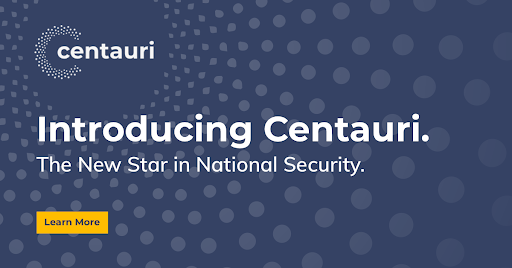
Having the right branding provides a valuable opportunity to define and differentiate the identity of your newly combined entity in the market and will set the tone for what consumers can expect from your company moving forward. Working with a brand development agency like Bluetext early on in the process is critical to get that branding right and ensure your M&A success.
Want to learn more about our M&A success stories? Check out our work HERE.
Picture this: You’re a cybersecurity expert with a next-generation product or service, and you’re looking for a way to get your message into the market uniquely. The industry landscape is crowded with companies with similar offerings and limited ways to stand out. You’ve been researching for hours and finally come across the perfect blog post – one about why brand storytelling is critical in cybersecurity (hint: you’re reading it). Now that you’ve found a blog post that answers your branding questions, you’re wondering where to find a cybersecurity marketing agency; in that case, I have some good news for you.
Sit back, enjoy a warm cup of coffee, and keep reading to learn more about the importance of brand storytelling through some of our favorite examples in cybersecurity.
Why Is Brand Storytelling in Cybersecurity Important?
The cybersecurity market is growing by approximately 10% every year. As a cybersecurity marketing firm, Bluetext has witnessed this growth and know it’s becoming harder to stand out in the cyber arena. These days, saying you solve your customers’ problems, and that your solutions are the best, simply isn’t enough. B2B buyers are tired of the same experience and are looking for authenticity and some sort of a connection. Even in a highly technical industry, it’s important to recognize your customers are still human! This is where brand storytelling comes in to help. Stories are an incredibly powerful tool in human connection and research shows the human brain positively responds to the impact of stories. Reading, seeing, and hearing a story is a way for users to enter the experience and connect with the subject of the story. By connecting with a story, user’s will pay attention longer, will want to learn more, and will be more trusting of your brand.
By instilling trust with storytelling, over 50% of B2B buyers are more likely to consider making a purchase, over 40% are more likely to share that story, and over 15% are more likely to buy a product/service immediately.
So now that we know why brand storytelling is important, let’s take a look at some of our favorite examples of brand storytelling in cybersecurity.
SonicWall
When SonicWall was looking for a cybersecurity marketing firm, they approached Bluetext to help them communicate their unparalleled business values across a variety of industries. Knowing the importance of standing out, Bluetext and SonicWall worked together to create the boundless campaign. The campaign was focused on floating imagery, which served to visualize the liberating feeling of breaking free from cyber threats. The campaign ads depict a series of end users, set in their specific industry. This creates a connection and familiarity with someone within that industry. Imagine seeing someone just like you, in the same industry and roles, facing the same challenges and use cases. This person was liberated from traditional cyber restraints by SonicWall, just as you could be.
To further bring the boundless story to life, Bluetext and SonicWall worked together to promote SonicWall’s Boundless 2020 Virtual event. In the end, this event ended up as the largest virtual event in SonicWall history and drove a 135% increase in attendance over their previous events.
HP
Hewlett Packard’s “The Wolf” campaign is one we often refer to as a masterful example of a company turning a mundane topic into a captivating story. Over the course of this series, Christian Slater infiltrates a company from the mailroom to the boardroom and exposes poorly secured devices on the company’s network. By creating this series with all of the components of a Hollywood box office hit, HP was able to effectively educate users on the importance of device security.
Norton
Another great example of brand storytelling is Norton’s The Most Dangerous Town on the Internet. In short, to quote the film, they visited “some of the most dangerous places on the internet to find out where cybercrime goes to hide.” In the film, the documentarians are able to interview small-time scammers and well-known cybercriminals who’ve infiltrated Google, the US Army, NASA, and more. By creating this documentary, Norton wanted to share an honest look at data havens and the secrets they hide. The authenticity shines through as a refreshing take on cybercrime that not many competitors are willing to share. With over 6 million views on YouTube and awards from Cannes, it’s safe to say this story got the brand’s message across. The story is dark, ghastly, brutally candid, and impossible to forget.

To help create a strong connection with users, as a top brand development agency, we’ve worked with many cybersecurity firms to help them tell their stories in a unique and captivating way. These stories have helped demonstrate that their businesses aren’t just faceless entities; they’re real people working to solve real problems.
Are you interested in working with a top cybersecurity marketing agency to help tell your story? Contact Us!
Considering a new name for your business? Whether your company has just undergone a merger or acquisition, or perhaps just needs a fresh rebrand, corporate naming can be just as equally exciting as it is daunting. If you have kids you probably relate to the decision anxiety that comes with naming. Will the name fit his/her personality? Will the name be memorable and unique? Will it withstand the test of time? The classic choice overload paradox sets in. The infinite number of possibilities makes the ultimate decision even harder. Not to mention the significance a corporate name can hold. Choosing your company’s name is one of the most important decisions you’ll make, as it sets the tone for all future branding initiatives. For better or for worse, your business name helps create a strong first impression with potential customers and investors.
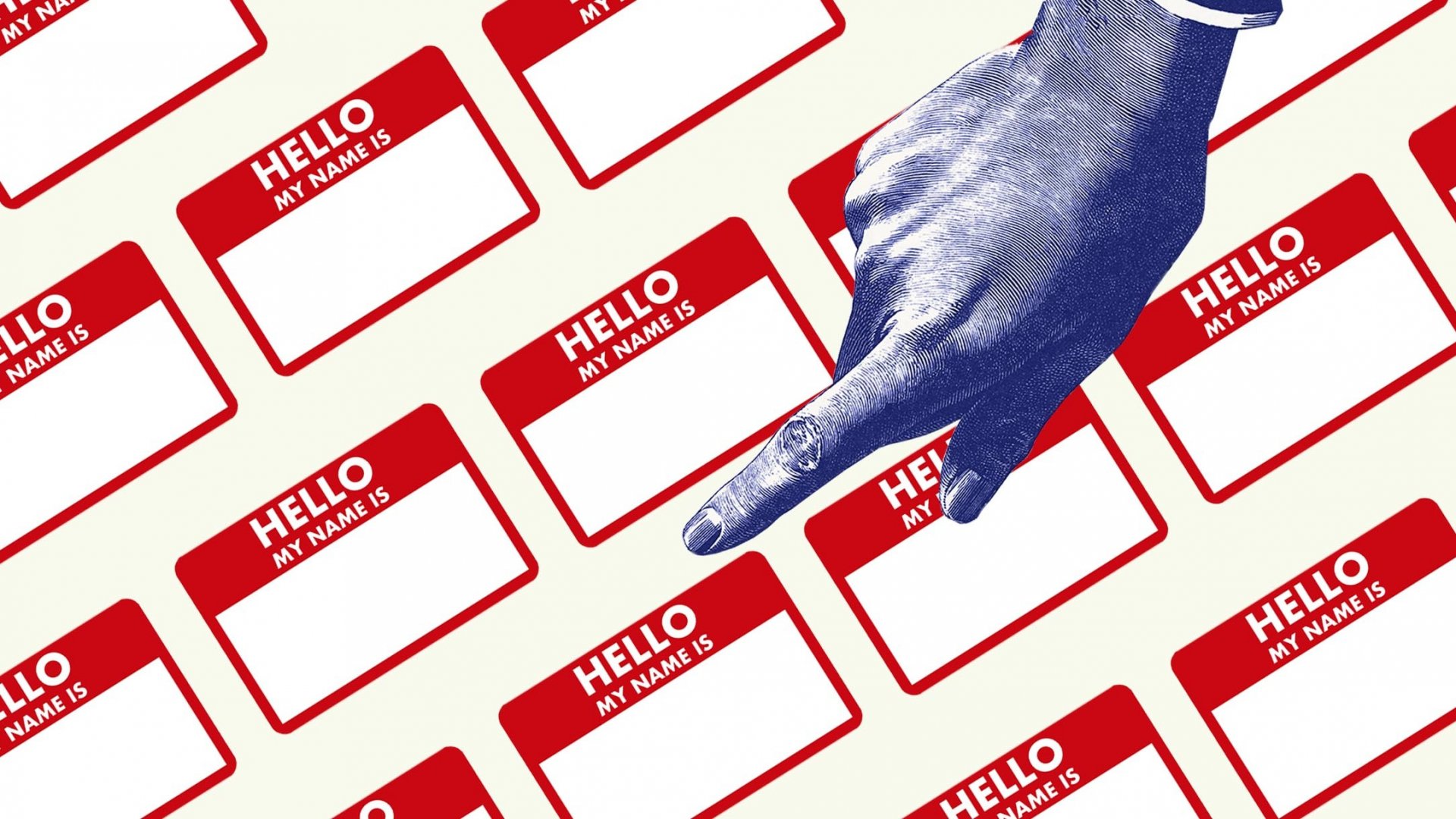
As a brand marketing agency, Bluetext has assisted a number of companies in the naming selection process. Many of our clients considering a new name often ask, “Well, where do we begin? How do we name our company?” And truthfully, there is no right answer to that. Coming from years of branding and messaging experience, we’ve learned successful new names can arise in a variety of ways, but names do tend to flatline for a few consistent reasons. So, we figured it would be best to start with what not to do, leaving exactly what to do open to the unique circumstances. Keep reading for a number of tests that can help you weed out names that can help you avoid brand regret down the road.
How Not to Name Your Company
Copy the Competition: Don’t select a name that mirrors others in your industry. Especially if you are in a crowded industry, or perhaps have business offerings that span multiple industries, it’s paramount you do thorough research to ensure there are no similarly spelled or pronounced competitors.
Twitter Test: Nowadays it is expected (and advantageous!) for every business to have social media accounts. One quick test for your new company name is whether it’s compatible with common social media handles. If your name is too long to be a Twitter handle (maxed at 15 characters), your handles will need to be adapted on other platforms as well.

Go Crazy with Creative Spelling: One of the biggest trends in naming is creative adaptations to spelling common words. For example, how Waze adapted the spelling of “ways” to creatively communicate their business. This strategy can be successful but can risk confusion. The issue with having an overly complex name is that you’ll always have to spell it when you say it because it isn’t spelled how people hear it. This could cause challenges with potential customers finding your business.
Bluetext’s Rule of Thumb: When doing alternate spellings of names, try and stay to one letter tweak per name.
Disregard the Domain Availability: Don’t fall in love with a name with an unavailable URL. When researching or considering new names, we recommend looking up the domain options immediately.

Let in Too Many Voices: While great in theory, opening this discussion to the masses is never a good idea. It is incredibly unlikely that involving everyone will result in a consensus. Oftentimes involving too many decision-makers is like having too many cooks in the kitchen, it just results in an inefficient and stagnant discussion of competing opinions.
Bluetext Rule of Thumb: Involve only key decision-makers. Ones with the company’s best interest in mind, and those able to leave their egos at the door. It may be worth taking the decision to a vote when you have selected a top 2 or 3 names, but in the early ideation and decision phases, be sure to limit the discussion to only relevant stakeholders.
Frankenstein Phrases: One common naming tactic is to combine parts of an adjective and a noun into a new word. While great in theory, more often than not the name seems disjointed or forced. The two words might work great on their own, but just don’t go together. Other common fallbacks include truncated words like Tech, Corp, or Tron.
Go Too Generic: While your name should not be overly descriptive and superfluous, going too generic can also be dangerous. Random acronyms don’t give any hint into your brand, offerings, or story. A good test is whether someone could tell what industry you’re in by the name. Overgeneralizing could cause people to overlook your company if there is no sense of differentiation. Conversely, you also don’t want to use a name that is too specific to the industry you’re in, as doing so will limit your ability to expand into new territories and sectors with the same company name.
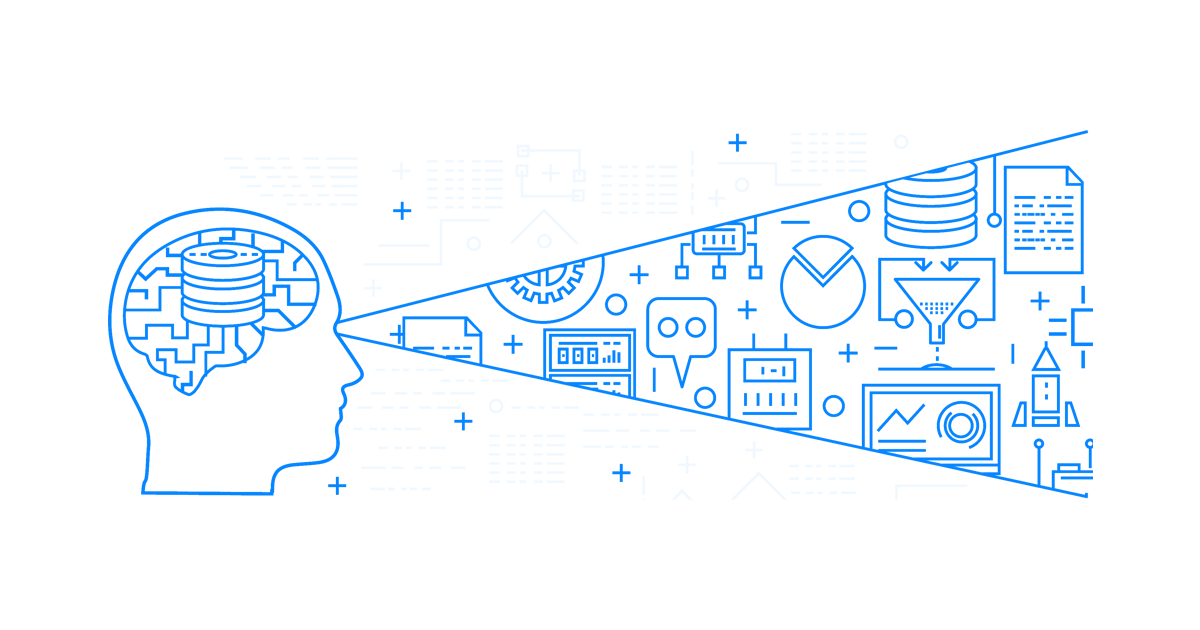
Forget to Practice Pronunciation: One of the most telling tests of a name: Can it be easily pronounced? Ask unbiased third parties to read the name aloud. Did they pronounce it as you expected? Can you easily repeat the word over and over without mispronouncing? Does the name roll off the tongue or is it a jumble of awkward consonants? Just like you would want your brand to look and feel right, you need your company name to sound and feel right.
We’ve shared our top eight ways not to name your company, but what should you do? Consult a professional branding agency. Hiring a third party brings in a fresh perspective to your company and overall brand strategy. Not to mention they will have a staff of professional copywriters who can help craft your new name and corporate messaging.
Need a new name? What are you waiting for? Contact Bluetext to learn more.
Congratulations, you’ve launched your brand – now what? As a digital branding agency, Bluetext has seen many clients go through a rigorous rebranding process only to find themselves lost and unclear of the next steps. Our digital marketing recommendation? Focus on a ‘Go to Market’ strategy! After investing the time and resources in revamping your brand, it’s time to showcase the finished product with pride to your audiences!
What Exactly is a ‘Go to Market Strategy (GTM) Strategy?
At its core, a GTM strategy is a campaign to target audiences to ultimately get them to reach your rebrand. While the end goal may vary, announcing the brand and gaining recognition and attention is a critical first step for any newly branded company.
Popular end goals include:
- Raising awareness
- Recruitment
- Lead generation
- Showcase capabilities/products/solutions
- Stand out against competitors
- Solidify stance in the industry
Whether your company has adopted a new visual identity, brand name, messaging platform, or all three, you should make these changes across all advertising channels. Consistency is key. Users should be able to clearly recognize a shift and not be confused by residual legacy branding. You may need to update your digital marketing campaign assets such as display ad creative, social media profiles, and website content. These assets should be eye-catching to grab the attention of new users, but also generate interest in returning users familiar with the old brand. The most common and successful channels to include in your GTM strategy are:
- Paid search
- Paid display
- Organic social
- Paid social
The most effective campaigns combine channels & targeting/retargeting to drive top-of-funnel traffic all the way down the funnel for full conversion. The beauty of modern search and social advertising platforms is the ability to target extremely specific buyer personas. Especially in a wider GTM strategy, you want to ensure your advertising spend is smart and reaching the intended audiences. Bluetext recommends targeting by at least the following demographics:
- Industry
- Demographics
- Job title
- Income
- Geographic location
What About Merger & Acquisition GTM Strategy?
Centauri
Bluetext recently supported messaging, brand, and website launch of Centauri, a new company born from the merger of three powerful federal contracting agencies. Centauri’s GTM strategy followed the launch of their new website with two primary goals: brand awareness and recruitment. Bluetext served as the creative branding, website design, website development, and digital marketing strategy agency for Centauri. To meet Centauri’s goals, Bluetext created an omnichannel GTM strategy to drive users to the new website and complete applications.
To meet brand awareness goals, paid display, search and social campaigns were used to introduce the company and position them in the industry as the leading, mission-first experts. These campaigns used the brand’s creative and intriguing copy to attract the attention of top of funnel traffic. The brand awareness campaign ads targeted both current customers and potential recruitments, and when clicked took users to a custom landing page announcing the new company.

To achieve Centauri’s recruitment goal, Bluetext’s GTM strategy aimed to draw a connection between the new brand and their work/mission. This campaign was geared to lower funnel traffic, targeting specific candidate demographics. Using robust targeting options, Centauri was able to reach only the type of people who would fit the qualifications and be interested in their national security mission, such as veterans, engineers, and government cleared individuals. These campaign ads drove viewers directly to Centauri’s career portal to view job descriptions and apply directly.
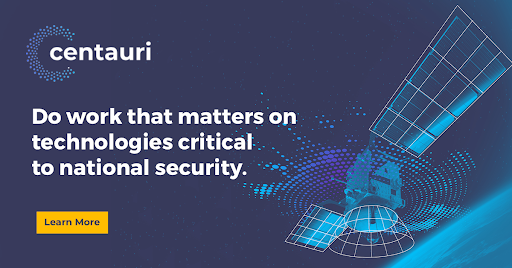
BlueHalo
Another recent Bluetext success story is BlueHalo, formally AEgis. BlueHalo sought out Bluetext to assist with their new brand messaging, creative, website, and digital strategy. Similar to Centauri, their GTM strategy kicked off following the website launch to raise brand awareness and recruit new talent. Their brand awareness campaign focused on introducing the new company as a merger of various companies to create one unified and solid force in the industry. The campaign ads drove users to the new website, where they could learn more about the merger, strengthened capabilities and industry presence. Recruitment focused ads used the precise targeting of paid social, search and social channels to retarget qualified individuals and tie the new brand to company mission. When clicked, users could view all job openings, or those most relevant to their skills set.
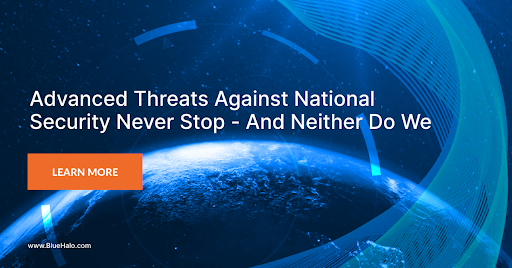
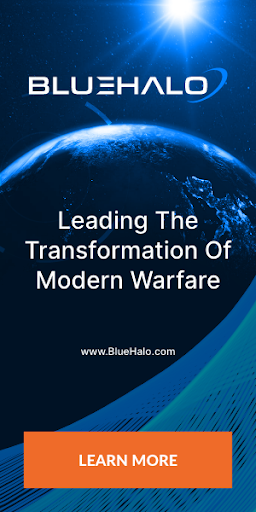
Bluetext has observed incredible success of clients who implement a GTM strategy. Having a game plan to follow the launch of your new brand or website allows you to swiftly transition from building a new brand to building business success. A GTM strategy helps reach customers, recruits and other audience members and provide competitive advantage.
Benefits of GTM also include, but not limited to:
- Creating awareness of a specific product or service.
- Generating leads and converting leads into customers.
- Maximizing market share by entering new markets, increasing customer engagement and outperforming competitors.
- Protecting the current market share against competitors.
- Strengthening brand positioning.
- Reducing costs and optimizing profits.
Want to make a splash with your GTM strategy? See what Bluetext can do for you.
When trying to define your brand and go-to-market strategy, it’s all about asking the right questions and using the right processes to find the answers. Continue reading to understand what this looks like and how to avoid brand regret.
At the core of your brand is an emotional connection. We identify with brands and remain loyal when we establish an emotional connection. Read: I use [brand] because it makes me feel [emotion]. What does that look like for your brand? At Bluetext, our branding process seeks to answer that question for you. 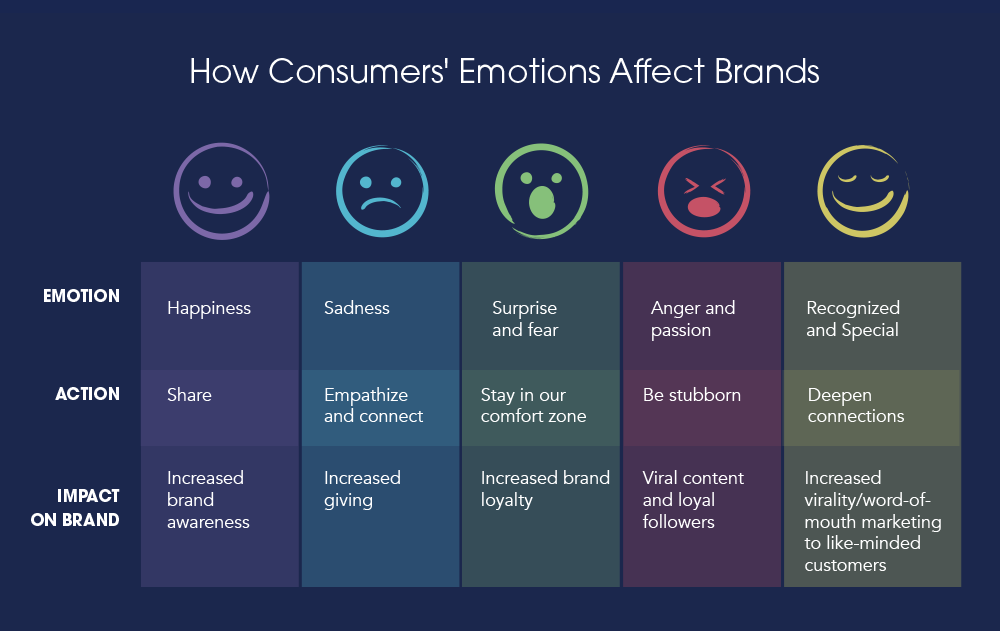 The process should challenge common beliefs and ensure that all constituents provide input to get to the core message and brand essence. We use a variety of workshops designed to do this, including individual stakeholder interviews and group exercises, ranging from adjective scales, metaphor association, and rapid point system voting in response to visuals. Using a combination of individual and group, and qualitative and quantitative data helps solve for the “halo effect” created when everyone follows the person with the most influence and the “bandwagon effect” when your human instinct is to agree with the group even when you disagree.
The process should challenge common beliefs and ensure that all constituents provide input to get to the core message and brand essence. We use a variety of workshops designed to do this, including individual stakeholder interviews and group exercises, ranging from adjective scales, metaphor association, and rapid point system voting in response to visuals. Using a combination of individual and group, and qualitative and quantitative data helps solve for the “halo effect” created when everyone follows the person with the most influence and the “bandwagon effect” when your human instinct is to agree with the group even when you disagree.
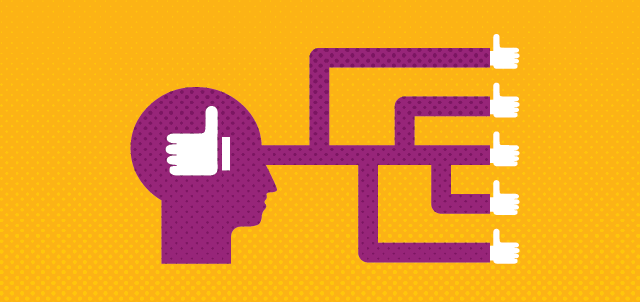
Interpreting qualitative answers is key. All too often, clients want to tell the world what they do, rather than the value they provide. Your ultimate messaging and visual identity should communicate your unique value. Want a quick pressure test? Remove your logo or name from an ad. If someone was familiar with your brand, could they still associate the ad with your brand? If the answer is “no,” the ad is missing your brand essence. Now replace your name or logo with your competitor’s. Does the ad still make sense? If so, it’s once again missing your brand essence.
Once you’ve embraced the process and put in the work, pressure testing the output is essential to its success. From surveys, to focus groups, AB testing, or even fancy facial electromyography, any testing is better than not testing. Depending on your go-to-market strategy and target audience, your marketing agency can recommend tests that fit. You may uncover something important not considered.
Finally, ensure the implementation is consistent across channels, including Search. There is a lot of noise out there. It can take many, many touchpoints to remember a brand. The more consistent your brand is deployed, the more likely your audience is to remember. In a Search dominated world, consistency also allows your audience to find you through keywords you have cemented in their mind as long as SEO is a part of your strategy.

Don’t confuse consistency with failure to evolve. It’s important to regularly test brand awareness and sentiment and conduct competitive research. The brand that worked yesterday may not work tomorrow. A good marketing agency will push you to shed the comfort of what has always worked.
A final word to the wise. It’s better to spend the resources upfront with a marketing agency who can get it right than to spend more resources later correcting a brand perception that has already been solidified in the mind of your audience. Avoid brand regret.
To learn more about other tips and tricks to avoid branding regret, check out our interview with Terry Jones, Founder and CEO of Travelocity, and Founding Chairman of Kayak, below.
A style guide is a fundamental apparatus for building up brand character. A brand style guide establishes your brand identity and is an extraordinary resource for making on-brand, consistent content.
The style guide is crucial in communicating your brand and design standards. Not only does this help maintain consistency with your company’s brand, but it also helps other key members of your team, such as writers, project managers and developers by serving as a solid point of reference.
Style guides should include examples of brand messaging, headlines and overall themes. This is significant in that it sets up a solid brand voice that reverberates with the crowd, which is a key driver for building brand mindfulness. Overtime, that mindfulness and consistency creates trust with your audience. This ensures every time someone experiences your brand, they’re experiencing the same underlying elements and traits.
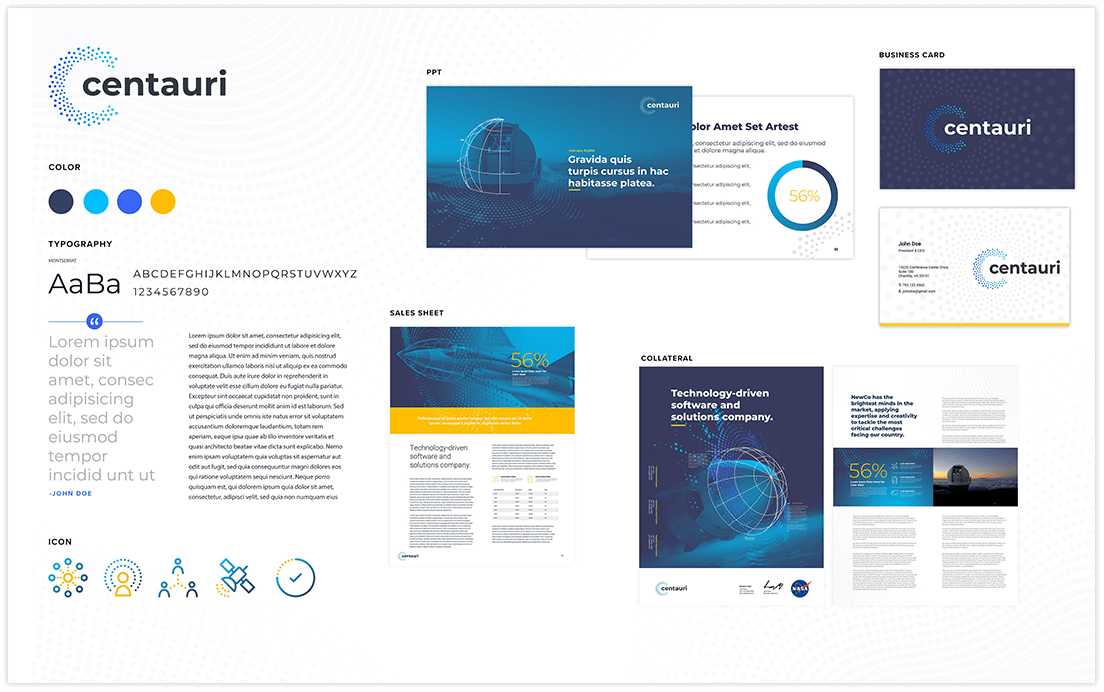 So what should go in a style guide? Typically, you want to include a logo, tagline, typography, color palettes, messaging guidelines and imagery guidelines. A more robust style guide can include things like the company overview, brand attributes, brand elements, iconography and more. While you provide specific guidelines on how to apply the brand, it’s important to also provide examples of how not to use the brand. This can include improper logo usage, incorrect use of design elements, messaging to avoid, and imagery to steer clear from. It’s important to be as clear and comprehensive as possible.
So what should go in a style guide? Typically, you want to include a logo, tagline, typography, color palettes, messaging guidelines and imagery guidelines. A more robust style guide can include things like the company overview, brand attributes, brand elements, iconography and more. While you provide specific guidelines on how to apply the brand, it’s important to also provide examples of how not to use the brand. This can include improper logo usage, incorrect use of design elements, messaging to avoid, and imagery to steer clear from. It’s important to be as clear and comprehensive as possible.
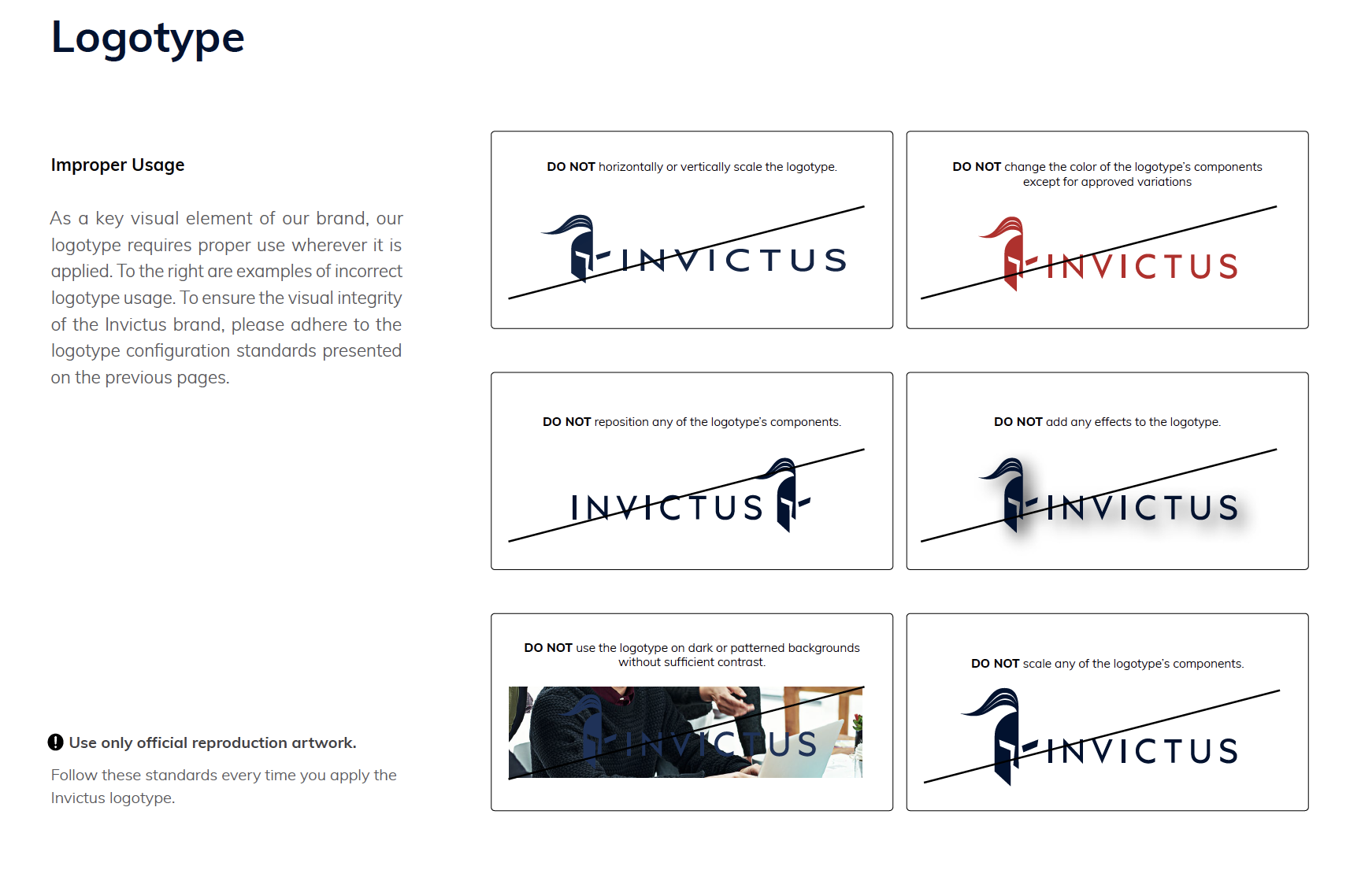
Remember: this style guide is a living document! You should expect your style guide to change as your brand evolves over time. It’s important to keep it updated as rules and guidelines change. Just like a living, breathing organism, your brand will continually be adapting, evolving and changing.
Style guides shouldn’t just be used by large well-known companies. Every company should have one – no matter the size. This will not only help members of your internal team in staying consistent with the branded artifacts they produce, but it will also help ensure your company is seen as a cohesive and trustworthy entity. The more credible you are seen with your customers and your audience, the more positive they will feel about you.
Interested in a style guide and how it can transform your business? Bluetext can help. Contact us today.
So you’re a top technology company who wants to be seen as modern and ever-evolving — much like the rest of the industry! To stay ahead you’ll need a modern, eye-catching design. Perhaps you want to redesign your logo… Where do you start? A memorable logo can ensure your brand stays top of mind and up to par with big-league competitors. Updating any aspect of your corporate visual identity can be intimidating, especially when making changes to one of the most identifiable features. There are many considerations: How can you establish or maintain your brand identity and form a strong connection with your audience? Do you want to fit in or stand out? How can you modernize your existing design?
One way to begin the process of redesigning your logo is by identifying some “zigs” and “zags” in your industry. Digital branding agencies define “zigs” as companies that follow industry standards and recent trends when designing and marketing their brands and “zags” as designs that opt to stand out in the crowd by moving against the latest trends.
Tech Industry Zigs
Gradient
Using gradients in web design emerged as a hot trend as early as 2016 and has since grown in popularity with no signs of slowing down. There are several companies that have successfully incorporated this trend into their CVI, for example, Stripe, an economic infrastructure technology company. Stripe’s gradient style has become incorporated throughout the brand and website, creating an ethereal and futuristic feel to its services, Instagram can be seen as one of the OG trendsetters, debuting gradient design into their mobile app icon in 2016.


Minimalistic
Another recent trend has been the simplification of logos and website design. Many brands have adopted this trend to streamline their CVI. This branding trend aims to provide a clean and clear brand vision, which is ideal for smaller screens as users continue to shift to mobile browsing. As we shift away from decorative and intricate details that look great on a billboard but cluttered on a mobile device, simple logos stay relevant and readable for modern consumers.
Many major global tech brands have already opted to use multiple iterations of their logo design – DropBox, Atlassian, and Android all now include a single image or letter logo option within their design range.


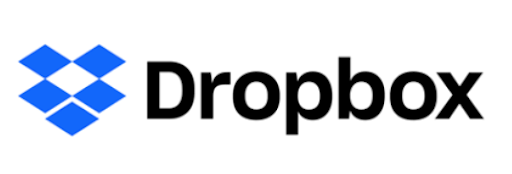
Illustrative
One way to establish a connection with your audience is by designing a unique illustration to accompany your wordmark. A key advantage to this trend is that when done successfully, brands can use the illustration as an identifier without the wordmark. Take Mailchimp’s Freddie as an example. In 2018, Mailchimp simplified their mascot’s design and gave him an established spot next to the logo.
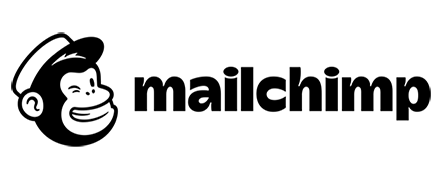
Tech Industry Zags
Fine Line Detail
While many tech companies are moving in the direction of simplification, some are going against the grain. One example is cloud migration software company Cloudreach, whose finger-print-like logo detail denotes security and reliability at first glance. Using fine detail has its advantages. Detailed designs can speak volumes about your brand value and tone. Especially in the technology industry rich with complex products you may want your logo to symbolize unique detail and features of your products. In contrast, simplified designs may be preferred to make complex technology more approachable to everyday consumers.
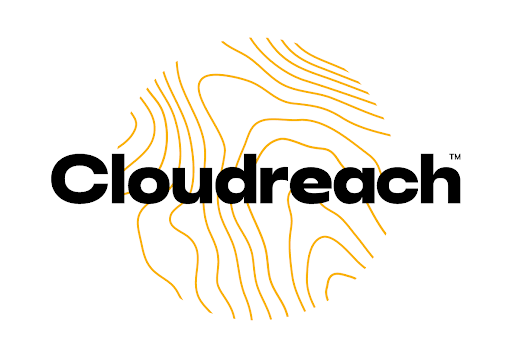
Anti-Marketing
Most technology-oriented marketing campaigns inspire the target audience to use the advertised product or service as much as possible. This statement holds true for most companies looking for customers to download and use their mobile apps. This is also where you can differentiate your campaign to stand out amongst the rest. For example, the newest campaign from the popular dating app, Hinge, inspires it’s the target audience to delete their app. Yes, you read that right. That may sound counterintuitive, however, it guarantees a different approach from their dating site counterparts, who focus on their service being the best at finding love for its users. Hinge’s campaign, instead, inspires its users to find love and delete the app.
Of the campaign, Hinge CMO, Nathan Roth, said “It’s quite common for apps to optimize for time in-app, whether it’s to maximize subscription or advertising revenue. We are purely focused on our users’ success and that’s helping them find someone worth deleting the app for. That’s our single focus,”
Interested in learning more about the zigs and zags of the technology industry? Contact us.
In recent years illustration has evolved far beyond traditional child’s play. The classic art form that many people associate with children’s books actually has serious B2B benefits.
More and more, illustration has become a focus of company web pages, getting more unique and colorful with each year. Illustrations can be a powerful tool in brand storytelling and avoiding the potential pitfall of cheesy stock alternatives. They can provide your customers with an approachable introduction to a brand, while also reinforcing design styles or colors key to your visual identity. For many B2B companies, illustrations have become an essential component of customer-facing imagery.

Here at Bluetext, we see a variety of purposeful illustration styles. Two of the main objectives for B2B companies seeking illustration is to visually describe abstract products, or depict meaningful customer experiences. For many industries, such as tech or cybersecurity, showing literal subjects or end-user experience is not possible through photography, therefore, illustration is an ideal solution.
Below are some of our favorite illustration themes used to take clients’ business goals to new heights.
Flat
There’s no reason to shy away from simplicity! Flat illustrations have been a huge trend in 2020, with many major companies including GoDaddy, Mailchimp, and Slack implementing them into their brand designs. This illustration style is most often used to depict people or experiences. Stock photography tends to favor extremely generic scenarios, or let’s face it, painfully boring subjects. When your business wants to highlight a specific experience or incorporate as much branded detail as possible, custom art may be the way to go. Illustrative styles offer far more flexibility and adaptation, without falling flat.
Bluetext produced flat illustration styles for Centauri’s employee engagement campaigns to depict unique company events and contests that stock photos could not.

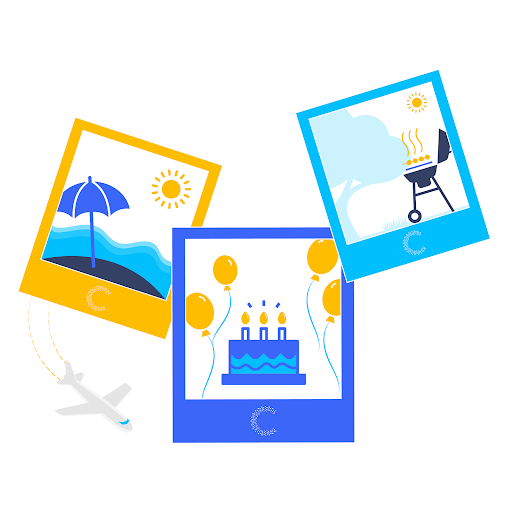
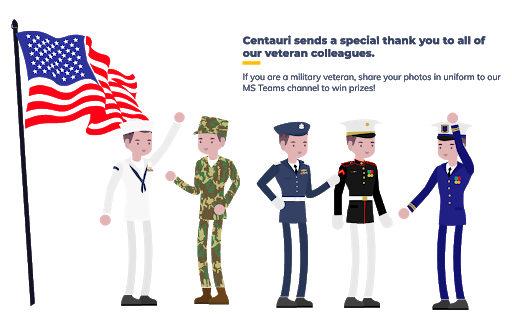
3-Dimensional
Bluetext’s work for Cvent brought custom illustrations to life in a 3D animated video. Intended to immerse the viewer with a preview of the event experience, graphic designers and animators transformed human illustration into a realistic simulation. With this stunning visual design, Cvent was able to digitally communicate their in-person experience to remote viewers and translate their business value in the most powerful manner.
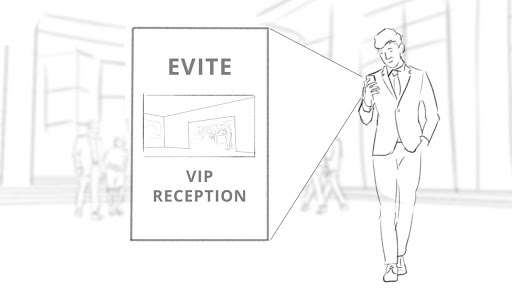


Sketch
Bluetext’s work for GMAC, Graduate Management Admissions Council, promotes graduate school admissions in an approachable and digestible manner. Stretch illustrations were used in the revamped CallingAllOptimists.com campaign to inspire people motivated to improve their future opportunities into action. Juxtaposing a serious life decision and often anxiety heavy admissions process with a uniquely, optimistic brand identity captures both the courage and the celebration of the end-user. Illustrative styles complemented real photography to provide a snapshot of the user, decision factors, and end result.


Monochromatic Gradient
In another successful campaign for GMAC, Bluetext designed custom humanistic illustrations to represent user personas. In awareness of a wide breadth of audience targets, the campaign opted to show a variety of potential applicants in a range of career stages. To resonate with a potential applicant, it was key that they could imagine themselves pursuing a graduate degree. To avoid isolating any potential audience members, Bluetext’s custom illustrations avoided biases of race or ethnicity by showing monochromatic styling of men and women in post-grad, young professionals, and even in established careers.



Product Illustration
Another top use case for illustrations is product depictions. Especially in service-based or digital industries, it can be a challenge to accurately depict what you’re selling to customers. Bluetext client RevBits, a cybersecurity software and service provider, overcame this obstacle with branded product illustrations. With a complex product lifecycle, visuals helped conceptualize their cybersecurity offerings in a clean and user-friendly format. Especially on webpages, product illustrations were an ideal way to communicate offerings to users scanning a webpage and without the time or desire to read long paragraphs of text. The illustrations utilized key brand elements such as color palettes and iconography to maintain a consistent brand experience throughout the website.



Digital illustrations are catching a new wave of excitement from companies across all industries. With an ever-expanding range of use cases and applications, we predict this will quickly become one of the most effective ways for B2C or B2B companies to start a more emotional conversation with users. With the rise of personalization and hyper-targeting, establishing warmer and more “human” relationships with clients and customers is a proven way to strengthen loyalty and improve overall ROI.
Interested in exploring the potential of a rebrand (or illustrations!) for your business? Contact Bluetext today.
Branding is one of the most important marketing strategies for a company. Your brand tells a story about who you are and what you do to prospects, clients, and, importantly, your internal employees. Branding typically involves a consistent and recognizable set of design elements, including colors, typography, logos, messaging, graphic elements, and more. It allows your company to make a consistent, meaningful, and lasting impression with consumers. Through your brand, you have the opportunity to stand out amongst the competition, showcase a product, but also drive new business by raising awareness for your company. But how do you keep branding consistent with various different products and/or services you want to highlight?
 The Rise of Sub-Brands
The Rise of Sub-Brands
Sub-branding is a lesser-known, yet equally as important, subdivision of a branding strategy. In an article from Brand Marketing Blog, “If you are a brand builder, then often there is more than one brand that you are building: the brand of your business and the brands of your products.” Sub-branding is focused on creating new subsections of the parent brand to best fit the specific products and/or services you offer to your customers. This is directly tied to the solution architecture of the company – the structure of how different offerings of a company are connected. Typically, a sub-brand strategy shares the same fundamental factors of the overarching brand’s personality, tone, design, and image. This can include sharing common factors such as typography, imagery, and more. They utilize outside elements, including graphic elements, primary colors, messaging, etc., to stand out from the parent brand. What makes a sub-brand unique is its goal to appeal to a very specific, niche audience.
Sourcefire Brands and Sub-Brands
To fully understand what a sub-brand is, let’s take a look at one of the most successful sub-brands in the Cybersecurity industry: Sourcefire. When Bluetext rebranded the company, we also worked with the Sourcefire team to sub-brand each of their most popular product offerings: FirePower, FireSight, FireAmp, and FireCloud. Each product has its own logo for users to differentiate between the four. While each product has its own unique logo, they still follow the overarching Sourcefire branding within the sub-brands: matching typography, custom graphic elements, abstract textures, and bold primary colors.

 The Impact
The Impact
Sub-branding is extremely important as it creates exposure for both the parent and child brands. It helps customers easily differentiate, organize, and search in a complex environment. It creates the opportunity to engage both new and existing audiences while taking advantage of the trust previously built in your specific industry. Because a sub-brand appeals to a very specific and niche customer, you have the affirmation that your marketing messaging is as targeted as possible. Your customers have the ability to have a unique, custom experience that is completely separate from the parent brand and in turn, are more likely to engage with the parent brand’s other products if they connect with an individual sub-brand.
Want to elevate your brand even more? Bluetext can help.
Welcome to 2020, a year of new normals, routines, and best of all, new logos! The logo design trends in 2020 thus far have been an intriguing remix of new and old. Logos have taken a trip back in time to a variety of eras, while also remixing modern styles. We’ve seen the gamut of design trends; from neon 80’s juxtaposed against inky, to futuristic 3D gradients and custom animation.
The key theme of 2020 logo design has been a digital-first focus. Many brands have modernized their logos for optimal web and mobile displays. For example, the popular gradient trend has evolved and merged with 3D design —a perfect fit for our smartphone society.
3D Gradients
Gradients are a unique way to blend any group of colors into a dynamic spectrum that exudes life and energy. Gone are the stark striped color transitions, as some brands have opted for a more subtle and gradual shift. This year, designers will give rise to the newest evolution of gradients creating depth and 3D effects in logos. Other top branding agencies are experimenting with new trends such as tapered gradients—ones that come to a central point and actually emphasize the contrast between their colors.

80’s Retro
Don’t thrift away your 80’s style just yet, because some fads never go out of fashion. Enough time has finally passed for all things 80’s to be cool again: video games, pop music, and the rebel attitude associated with them. In 2020, logo design agencies expect to see a resurgence of throwback logos accented with chrome, neon, and a lot of digital pixels. These styles give a nod to the old-school tech that preceded the glowing iPhone and laptop screens our eyes are glued to today. Nostalgic marketing has made a huge comeback in recent years, necessitating a cool, retro logo to accompany any throwback campaign. Throwback logos are popular because they capitalize on consumers’ nostalgia of old-school 80s tech, which is widely known to be retro, cool, and most importantly, collectible. Some logos reference nostalgic 80’s items by literally depicting the old school cassette tapes, arcade games, etc. Others embrace this trend with 80’s typography and design trends, like GV’s logo for LI Mowz.

Ultra Thin Lines
In 2020, high definition is leaving its mark on logo design. Designers push the envelope with extremely delicate lines, creating effects that can only work in the digital media. With extremely detailed linear patterns, logos began to feel ethereal and surreal — much like the original perception of radio and transmission media. With the new ability (and COVID necessity) for some brands to exist exclusively online, previous print limitations are eliminated. In an age of high-resolution screens and defined displays, complex line design makes classic logos seem elementary and easily reproducible.

Multi-Layered
2020 has been all about complexity! Logos are going deeper than ever before using artfully layered color systems. Especially with new digital affordances, designers are reverting flat and semi-flat designs to build depth through color layering. While shapes and colors remain simple, their relationship has intensified. By adding additional layers, designers create complex logos with highlights, shadows, and overlapping colors to communicate the brand brands. Especially on digital screens, the ability to create three-dimensional effects creates a unique, almost tactile experience.

Animated Logos
Top design agencies have been producing logo animation for some time now, but in 2020 we’ve seen more detailed and innovative plays on animation. Previous logos have been limited to simple movement, but over the years technology has allowed for more intricate and purposeful movement. Especially with a growing digital audience, animated logos can be more eye-catching and practical to the brand story. A popular 2020 logo design trend has been the blending of 2D and 3D animation or logos with multiple moving parts. These complex logo animations aim to take the viewer on a journey and tell a story. With lots of details to look at, the viewer looks at these logos longer than they’d look at a more simple logo animation and can potentially find something new they like about it every time they see it again.
The move toward animated logos comes from a similar place as the tapered gradient logos trend: when you’re designing for screens, there’s a whole lot more you can do as opposed to when you’re designing for print.
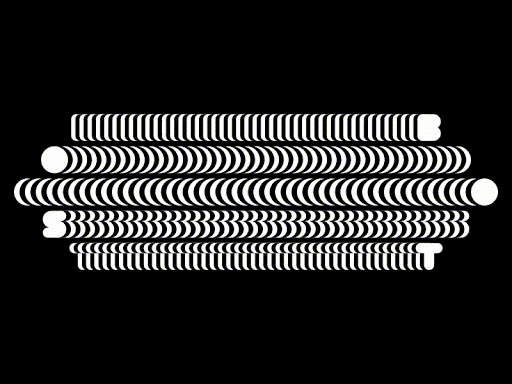
The logo design trends for 2020 will continue to build on everything designers have been exploring in the last few years, while also taking the design in directions that are totally new, totally fresh, totally right for an all-new decade. Let’s take a look at the top logo design trends that are already defining 2020.
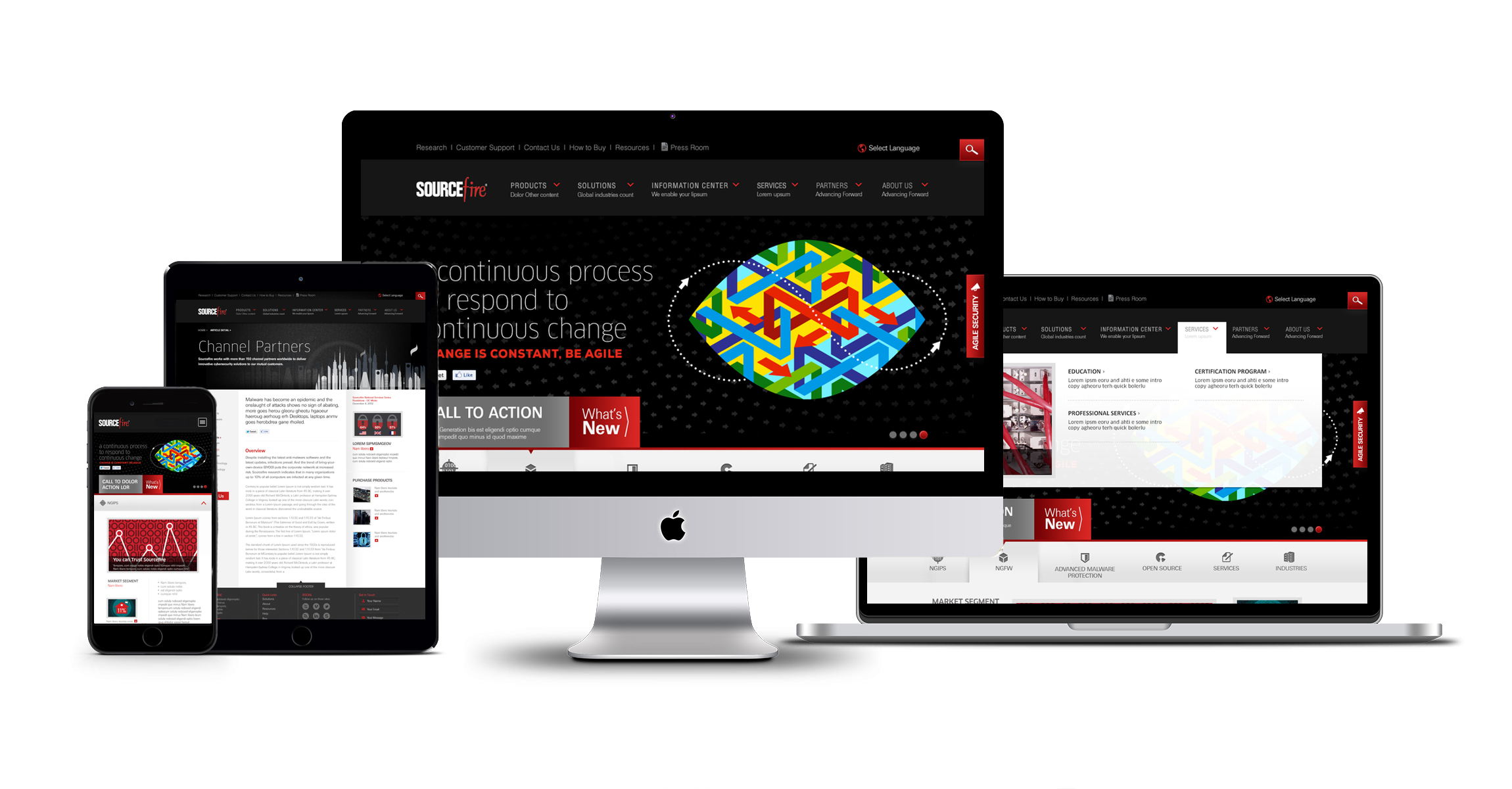
 The Impact
The Impact